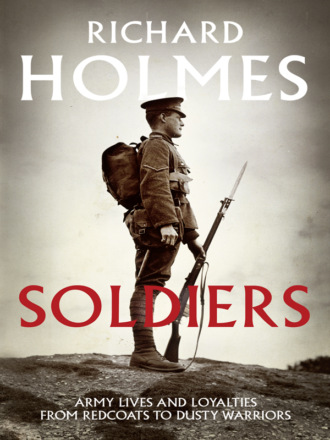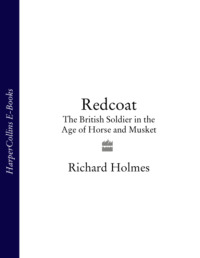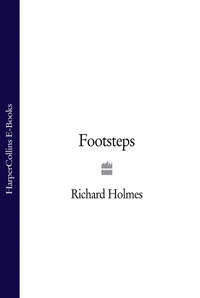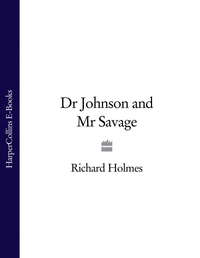
Полная версия
Soldiers: Army Lives and Loyalties from Redcoats to Dusty Warriors
He would certainly have drawn the line at striking the blow himself, but in May 1780 the thoughtful Captain John Peebles, commanding the grenadier company of the Black Watch, confided to his diary ‘I knocked down Norman McKay on the parade not so much for being drunk as swearing he was not, and though he deserved it I am sorry for it, for we should never punish a soldier in a passion.’24 Peebles was neither a thug nor a martinet. When he returned home in February 1782 he made a moving farewell address to the men of his company, stressing the ‘satisfaction and pleasure’ of having been their commander, and commending them for ‘that good name you are so justly possessed of whether in quarters or the field.’ He remembered that he ‘could hardly make an end of this little speech, my voice faltered, and my knees shook under me.’ Evidently ‘the poor fellows were affected too.’ He promptly ordered them ‘five gallons of rum to make a drink of grog in the evening,’ effectively giving them nearly half a pint of rum a head, a gift no doubt destructive of the very sobriety he had urged upon them.25
Continuity and change lie at the very heart of my story. Israeli historian Martin van Creveld, has argued that different forms of military organisation were ‘ultimately rooted in political, social and economic structures … each of them was also partly the product of the technology then in use.’26 The British army that came into being with the restoration of the monarchy in 1660 has evolved in myriad ways since then, with these political, social, economic and technological pressures all playing their part in the process. I have no doubt that the Duke of Marlborough, who oversaw the army’s transition from a scarlet puddle of ‘guards and garrisons’ in the late 1600s to the world-class force that helped dash the dynastic ambitions of Louis XIV, would recognise, in the tired heroes of Helmand, the descendants of the men he led to victory at Blenheim over three hundred years ago. They wear loose camouflage fatigues, not red coats with bright facings; their professional knowledge would leave Marlborough’s men dazzled, and their rationality and scepticism would mark them off from an age coloured by belief and deference.
And yet their social organisation is so recognisably similar that we may doubt whether, in the British context, technology has really shaped structures quite as much as it has elsewhere. The major combat arms, infantry, cavalry, and artillery, have retained forms and terminologies that the men who fought at Blenheim – or Waterloo or the Somme, for that matter – would readily grasp. Lieutenant colonels, leading their regiments into action, have lost nothing of their pivotal importance in the hierarchy, and the death of Lieutenant Colonel Rupert Thorneloe of the Welsh Guards, killed in Afghanistan in the summer of 2009, underlines the risks they still run. Regiments, with their elders and distinctive markings – as characteristic of the army as an ancient Briton’s woad, the cicatrices of an African warrior or a junker’s duelling scars – are still an enduring feature of the army, usually much misunderstood and endemically under threat, but thudding on like the beat of a distant drum.
Formal and informal structures continue to intermesh. Most modern soldiers would recognise the close and comradely world prescribed in the 1800 Regulations for the Rifle Corps, which stipulated that every corporal, private and bugler should select a comrade from a rank differing from his own. Comrades were to berth, drill and go on duties together, and comrades could not be changed without the permission of the captain.27
Although the technology would doubtless baffle a Wellingtonian footsoldier, Colour Sergeant ‘Stick’ Broome’s description of extracting the wounded Private Johnson Beharry from a Warrior armoured vehicle in Iraq shows the same bonds of comradeship that have helped hold men together for three centuries:
We hit the ground, and we came under contact from small arms immediately. Woody and Erv went left, myself and Cooper started to pull Beharry out of his seat. This was the first chance I had to see the badly lacerated face of Bee … I pulled him out with the help of big Erv and Jim Cooper and put him into my Warrior with his head in my lap.28
There is much in common between a rifleman like William Green of Lutterworth, whose ‘disposition to ramble’ took him into the army, and Dorset shepherd Benjamin Harris, carried away by the understated glory of a green jacket, and the likes of Lance Corporal Wood and Private Ervin. A modern recruiter would squirm at the Duke of Wellington’s assessment of the army of his own age:
A French army is composed very differently from ours. The conscription calls out a share of every class – no matter whether your son or my son – all must march; but our friends – I may say it in this room – are the very scum of the earth. People talk about enlisting from their fine military feeling – all stuff – no such thing. Some of our men enlist from having got bastard children – some for minor offences – many more for drink; but you can hardly conceive such a set brought together, and it is really wonderful that we should have made them the fine fellows they are.29
It remains true that the majority of infantry soldiers are recruited, as they always have been, from boys whose civilian futures do not seem bright. The modern army’s growing tendency to cream off the cleverest of its recruits for its technical corps has accentuated the process. In 1942 the army’s adjutant general, responsible for its manpower policies, admitted that the infantry ‘received in effect the rejects from the other arms of the service’.30 It is still easiest to recruit at times of economic depression. Just as Wellington could scarcely have beaten the French without the aid of men who had chosen to serve rather than starve, so the army of the early twenty-first century has been saved from a manning crisis by the shortage of jobs elsewhere.
In Scotland the issue has become heavily politicised, with Scottish National Party backbencher Christine Grahame maintaining that many Scots recruits were in fact ‘economic conscripts … turning to the Army as a way out of poverty and deprivation, brought on by the failed policies of London Labour’.31 The predictable furore aroused by these remarks cannot alter the fact that Scotland’s economic plight was a spur to recruitment from the army’s very earliest years. As historian Stephen Wood wrote of the Scottish soldiers who signed on to fight in Marlborough’s wars: ‘Many would be enlisted while drunk or have the edges of their doubts blunted with alcohol; some would enlist as an alternative to gaol, or starvation, or domestic responsibilities.’32
It is evident that economic compulsion was not restricted to Scotland. In 1859 Lieutenant General Sir George Weatherall, the adjutant general, told the Royal Commission on Recruiting ‘there are very few men who enlist for the love of being a soldier; it is a very rare exception … they are starving, or they have quarrelled with their friends, or there are cases of bastardy, and all sorts of things.’33 In 1877 the sergeant major of the 77th Foot asked a Geordie recruit if he had served in the army before, only to be told ‘No. Aw were niver hard enough up, to list, afoor.’34 Robert Edmondson, who signed on as a private in the late 1880s, suggested that up to 80 per cent of the army was drawn from the unemployed, adding ‘Empty pockets and hungry stomachs are the most eloquent and persuasive of recruiting sergeants.’35 The First World War made comparatively little difference, and in 1926 The Times reported that 60 per cent of recruits from the London area were unemployed when they signed on. When Spike Mays arrived at Canterbury to begin his basic training, he was received with a cheery greeting from Mitch, a fellow recruit ‘Wotcher, mate. Ain’t ’arf ’ungry. Could scoff a scabby-’eaded ape.’36
There were always some genuine enthusiasts. Joseph Gregg, who was to take part in the charge of the Light Brigade, wrote, ‘My father was a soldier at the time of the battle of Waterloo … As a boy, I always had a desire to see a battlefield, and made up my mind to enlist in a cavalry regiment.’37 Herbert Wootton, who joined up on the eve of the First World War, agreed that he too
was very keen on becoming a soldier. I had two uncles, both regulars, who served through the South African war of 1899–1902. As a youngster I was thrilled with their stories. I became a keen reader of G. A. Henty’s books on war, and later read Rudyard Kipling’s books. I loved to be in the company of old soldiers.38
Captain Doug Beattie’s assessment of his own predilection for a military career (he signed on as a 16-year-old in 1981) has many answering echoes:
I suppose soldiering was in my blood. My dad was a serviceman. My grandfathers had fought in World War Two, one with the Royal Artillery, the other with the Irish Fusiliers. I entered the world in England, a result of the posting system of the army that dad – then a colour sergeant in the Royal Ulster rifles – was subject to.39
Wellington’s point about conscription is fundamental to understanding the British army. For most of its history it was recruited by voluntary enlistment, although economic necessity, judicial compulsion, and the gulling of drunken youths all blurred the definition of what a real volunteer might actually be. For example, an Englishman in eighteenth-century Atholl
observed a poor fellow running to the hills as if for his life, hotly pursued by half a dozen human blood hounds. Turning to his guide, the gentleman anxiously inquired the meaning of what he saw. ‘Och,’ replied the imperturbable Celt, ‘it’s only the Duke raising the royal Athole volunteers.’40
In the British experience legal compulsion has been the exception not the rule. The first Military Service Act was passed in early 1916, as a response to losses in the first eighteen months of the First World War. This represented a sea-change in public policy. Conscription was in force from 1916 to 1919, and again in 1939–60; from 1948 this was in the guise of National Service. It was only during these years that the army was in any sense a genuinely national force, its members, serving and retired, strewn so liberally across society that there was no escaping them.
As a young Territorial private in the early 1960s I hitch-hiked in itchy battledress, getting lifts, without any real effort, from lorry-drivers who asked knowing questions about my ‘mob’; mothers whose boys had recently completed their National Service; and men whose conversation slid onto sangars and bocage, desert roses and PIATS – the well-burnished argot of folk who had done it, which I, most demonstrably, had not.41 It was a world full of men who understood the difference between a brigadier and a bombardier, a battalion and a brigade. They knew that you stepped off with the left foot and that although you assiduously called a warrant officer ‘sir’, you did yourself no favours by imagining that you might salute him.
In the early twenty-first century, as in the first decade of its existence, the army now constitutes a tiny proportion of the population; all the signs suggest that this proportion will decrease still further. About one in seventy of us has a close family member who has served or is still serving, and regular soldiers themselves account for just 0.087 per cent of the population. For good or ill, Britain is almost wholly demilitarised. Now, as the success of the charity Help for Heroes and the moving unofficial ceremonies that greet the bodies of those being repatriated in the Wiltshire town of Wootton Bassett demonstrate, there is a sympathy for servicemen and women that has little direct connection to the conflicts in either Iraq or Afghanistan. But as Horace Wyndham complained over a century ago, ‘Outside the pages of “popular fiction” the soldier as he really is, is scarcely heard of, and over his life hangs a veil of reserve that is but seldom lifted.’42
Changes in the system of military honours and awards, instituted towards the end of John Major’s administration, mean that acts of bravery are now rewarded with medals whose significance is scarcely grasped by the population as a whole. Successive changes in the regimental system, however good the case in their favour, have replaced the names and badges so familiar to my father’s generation with terminology that the nation has not taken readily to its heart. Somehow 1 Mercian (Cheshire) does not have quite the ring of the Cheshire Regiment. Things that loom large in a soldier’s intimate life – like the length of a tour or operational duty; the duration of rest and recreation (‘R and R’) during it; and the quality of single accommodation and married quarters – are rarely discussed in the press. In contrast, there are frequent articles about the poor quality of equipment. Steve Brooks, writing of his time in Iraq, resented this:
I hate nothing more than civvies taking the piss about the latest article in the Mail or the Mirror about the army where the rifles don’t fire and radios don’t work. Yes, comms are shit, but we are the calibre of soldiers … to work hard for comms … like all aspects of soldiering we had to fight for comms to remain effective.43
Not all the news is bad. The growing number of parades marking units’ return from overseas is welcome evidence that the army is beginning to emerge from beneath the cloak of invisibility that has shrouded it for so long. This cloak was woven in the long-running campaign in Northern Ireland. It is salutary to recall just how costly this was in terms of human life. In 1972, its worst year for casualties there, the army lost 102 officers and men killed in the province, and on 27 August 1979 two bombs at Warrenpoint left eighteen soldiers dead. There is a strong case for saying that the most serious damage that the IRA did to the army was not by killing its soldiers, but by attacking isolated uniformed soldiers outside the province which led the services to ban their members from wearing uniform in public, except on clearly specified occasions. I had grown up in a world full of uniforms, but by the time I attended Staff College in the 1980s things were very different. Most officers avoided the uniform ban by slipping on a civilian jacket over their military sweater, and downtown Camberley abounded with well-trimmed men in their early middle years. The subterfuge would have been unlikely to fool even the dimmest hit squad, but it was another step on the road to self-effacement. My first arrival as a staff officer at Headquarters Land Command at Wilton (wafted in by a gust of self-importance, for I had contrived to become a colonel) drew a polite rebuke from the MOD policeman on the gate. I had broken the rules by wearing uniform, and should take care to keep it covered up in future.
Reversing the uniform ban has not proved easy. In March 2008, shortly after the Government had commissioned a study that was to recommend that servicemen should be able to wear their uniforms as a matter of course, the station commander of Royal Air Force Wittering ordered that uniforms were not to be worn off-duty because of ‘persistent threats and abuse’ in nearby Peterborough.44 In January that year, 200 soldiers had their aircraft diverted, because of bad weather, from RAF Brize Norton to Birmingham. They were told to change from uniform to plain clothes on the tarmac before passing through public areas because, as a ministry spokesman put it ‘For security reasons, the MOD wishes to reduce the military profile on flights carried out on its behalf at civilian airports.’ There have been numerous cases of discrimination against service personnel in uniform. In November 2006 an army officer was refused entry into Harrods on the grounds that he was in ‘combat dress’; in September 2008 a hotel refused a room to a wounded soldier, who was forced to spend the night in his car; and in late 2009 four soldiers attending the funeral of a comrade killed in action in Afghanistan were banned from a Maidenhead nightclub: ‘You can all come in,’ said the helpful doorman, ‘apart from the squaddies.’
My regard for the soldier stems from a lifetime’s study as a military historian and almost as long a reserve infantry officer. For more than forty years I have read about soldiers, taught them at Sandhurst and Staff College, listened to them grumble or exult, watched them ply their trade in the Balkans and Iraq, visited them in hospital at Selly Oak and seen them arrive in flag-draped coffins at Royal Air Force Lyneham. It should already be very clear that this portrait will show Tommy Atkins warts and all. At one extreme there are those who prefer their pictures to have blemishes air-brushed out. Many years ago, a military reviewer was pained that the psychologist Norman Dixon (a former Royal Engineer officer, wounded and decorated for his work in bomb disposal) should ‘write so cynically about his former profession’ in his important book On the Psychology of Military Incompetence. One of the few adverse reviews of my own book Firing Line appeared in the British Army Review. The converse is also true, for there are perhaps as many who focus on an image of unrelieved savagery, or who see the army as a boss-class tool for turning nice boys into layabouts and killers.
This is not a chronological history of the army and its achievements. There have been many published in my working lifetime, with Correlli Barnett’s Britain and Her Army (1970) wearing its judgements well even where recent scholarship has advanced our detailed knowledge. Allan Mallinson’s The Making of the British Army (2009) is the most recent easily accessible account. This book is instead a social history of the soldier. Its organisation is thematic rather than chronological, and its preoccupation not with big battles or frontier scrimmages, but with the myriad routine observances of military life. It is the story of a man as ancient as a redcoat in Charles II’s Tangier garrison and as modern as the gate-guard on Camp Bastion. It also concerns the women who followed him, anxiously watched his progress from afar or, more recently, soldiered with him. Given the immense change in Britain over the past three centuries, it would be inconceivable for the soldier not to have changed too. What surprises me, as I get ready to endure the fug of our first barrack room, is not how much he has changed: but how little.
I

CHAPTER 1
CHUCK HIM OUT, THE BRUTE

WRITING JUST AFTER the First World War, Field Marshal Sir William Robertson maintained that ‘the army is not popular in the sense that the navy is. The latter usually enjoys full public support, the army seldom does except in war, and consequently it labours under considerable disadvantages in order to prepare for war, and from this it has followed that our wars have so often been a case of muddling through.’1
To the high Victorians, the British soldier was Tommy Atkins. The nickname probably originated in an 1815 War Office publication showing how the Soldier’s Pocket Book should be filled out, giving ‘Private Thomas Atkins, No 6 Troop, 6th Dragoons’ as its exemplar. By 1837 Atkins was a sergeant, and could sign his name rather than scrawl a mark. We are sometimes told that the name was chosen by the Duke of Wellington. He remembered the pivot man of the grenadier company of his regiment, the 33rd Foot, dying in Flanders in 1793 with the stoic words ‘Never mind, Sir, it’s all in the day’s work.’ However, Wellington did not become commander-in-chief of the army till 1827, so it is very unlikely that he would have been consulted. In 1883 the Illustrated London News showed ‘Pte Tommy Atkins returning from Indian Service’, and in 1892 Rudyard Kipling dedicated his Barrack Room Ballads to ‘T.A.’ The collection included ‘Tommy’, Kipling’s visceral condemnation of society’s predilection for ‘makin’ mock o’ uniforms that guard you while you sleep’, which concluded:
For it’s Tommy this, an’ Tommy that, an’ ‘Chuck him out, the brute!’
But it’s ‘Saviour of ’is country’ when the guns begin to shoot;
An’ it’s Tommy this, an’ Tommy that, an’ anything you please;
An’ Tommy ain’t a blooming fool – you bet that Tommy sees!2
Ambivalence about the redcoat long predated Kipling. To the Georgians he was Mr Lobster, a nickname stemming from a 1740 dialogue between ‘Thomas Lobster, soldier, and Jack Tar, sailor’, in the political news-sheet The Craftsman, a periodical so offensive to Prime Minister Robert Walpole that he had its publisher arrested every six months as a matter of course. The conversation redounded little to Mr Lobster’s advantage, for while he was weighed down by firm discipline and a heavy pack, plied his murderous trade at close quarters and was commanded by popinjays who had bought their commissions, his apple-cheeked interlocutor cruised the rolling main, defending Britain’s maritime prosperity, and returned to a grateful nation enriched by prize money. Nearly a century later Portsmouth’s ladies of the night made their own preferences clear:
Sailors they get all the money
Soldiers they get nought but brass.
I do love a jolly sailor
Soldiers you may kiss my arse.
Part of the reason for the nation’s long-standing suspicion of her soldiers can be traced to the circumstances prior to the regular army’s formation in 1661. Britain had just emerged from a long civil war, and had had quite enough of soldiers, whether they had fought for king or Parliament. Moreover, in 1655–7 Oliver Cromwell had instituted direct military government in England and Wales, through major generals presiding over twelve regions, answerable to the lord protector himself. Although the proximate cause of the experiment was a series of royalist plots, Cromwell believed that the nation’s morals needed urgent reform. The major generals, their troops of cavalry funded by a 10 per cent ‘decimation tax’ on royalists, stamped out seditious and ungodly pastimes like horse-racing, plays, bear-baiting and cock-fighting, and closed unruly ale-houses. They also punished those guilty of licentiousness, blasphemy, and swearing.
Although the rule of the major generals was unpopular, the scars left by the Civil War were far deeper. As historian Charles Carlton has observed, ‘No standing army’ was a Restoration slogan driven by ‘fear of soldiers, not because they killed people, but because they turned society head over heels’.3 Oxford scholar Anthony Wood thought that his fellow undergraduates who went off to be soldiers were ‘debauched’ by the experience. Although Bulstrode Whitelock, Cromwell’s ambassador to Sweden, was on the winning side when he told his hosts of the horrors of civil war, he believed that his fellow-countrymen were heartily sick of ‘seeing servants riding on horseback and masters in great want’.4
Although most of the New Model Army’s officers were not much different from their cavalier opponents – Lord General Fairfax was a peer’s son and Lieutenant General Cromwell a country gentleman – enough of them rose from humble beginnings to high rank to cause affront. Cromwell’s assertion that ‘I had rather have a plain russet-coated captain that knows what he fights for and loves what he knows, than that which you call a gentleman and is nothing else’ struck a jarring chord within a stratified society used to obeying its natural leaders.5 Amongst the reasons for the long-standing practice of the purchase of commissions, which disappeared only in 1871, was a desire to ensure that officers were gentlemen rather than enthusiasts.
Part of it was about national identity. The Civil War was not simply an English phenomenon, but had extended across each of the three kingdoms ruled by Charles I. It was at its most bloody in Ireland, where its agonies reflected long-standing religious frictions, and each new episode, from the revolt of 1641 to the Cromwellian pacification of 1649–53, simply added fresh horrors, with new heroes and martyrs, to a list that was long enough already. The Scots seemed to have prospered from their early alliance with Parliament, but their war soon turned sour. There was a bitter conflict within Scottish society: part clan feud, part power struggle, part confessional dispute. Alongside this there was an external war which saw Scots royalists suffer appallingly in their invasions of England in 1648 and 1651. So many were sent off as bondsmen to the West Indies after their defeat at Worcester, that merchants complained there was no profit in shipping them out. Suspicion of the soldier was writ large enough in England, but in Ireland and Scotland it was seared on the national consciousness.











